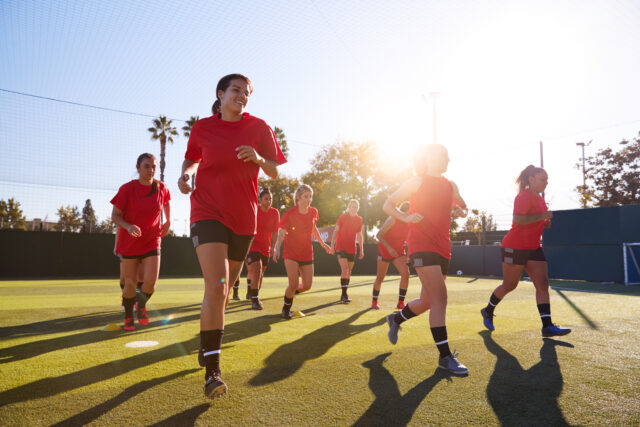In today’s competitive and resource-constrained educational landscape, athletic directors must demonstrate the impact of their programs not only to justify their existence but also to secure additional funding. Implementing a thorough athletic program evaluation is essential for showcasing value, identifying areas for improvement, and unlocking new funding opportunities.
Defining the Scope of Athletic Program Evaluations
Step 1: Establish Clear Goals and Objectives
The first step in evaluating an athletic program is to establish clear goals and objectives. What do you hope to achieve through your sports programs? Common goals include promoting physical health, fostering teamwork, developing leadership skills, and enhancing school spirit. Objectives should be SMART (Specific, Measurable, Achievable, Relevant, Time-bound). For instance, an objective might be to increase student participation in sports by 15% over the next academic year.
Step 2: Choose Appropriate Evaluation Methods
Select evaluation methods that align with your goals and resources. Various methods can be used to collect data and feedback:
- Surveys and Questionnaires: Gather insights from students, parents, coaches, and community members about their experiences and satisfaction with the programs.
- Interviews and Focus Groups: Conduct in-depth discussions with key stakeholders to uncover detailed perspectives and suggestions for improvement.
- Observations: Attend practices, games, and other events to directly observe the program’s implementation and dynamics.
- Data Analysis: Use metrics such as participation rates, injury reports, academic performance of student-athletes, and financial records to evaluate the program’s impact and efficiency.
Step 3: Implement the Evaluation Plan
Once you have chosen your methods, create a detailed evaluation plan. This plan should outline:
- Timeline: Specify when each evaluation activity will take place.
- Responsibilities: Assign roles for data collection, analysis, and reporting.
- Ethical Considerations: Ensure that all data collection adheres to ethical standards, including confidentiality and consent.
Step 4: Analyze and Interpret Data
Collect and analyze data systematically to identify trends, strengths, and areas for improvement. Use both quantitative data (e.g., statistics on participation and performance) and qualitative data (e.g., feedback from surveys and interviews). Look for patterns and outliers and compare your findings against your established goals and objectives.
Step 5: Report Findings and Share Results
Prepare a comprehensive report that summarizes the evaluation process, findings, and recommendations. Use visual aids like charts, graphs, and infographics to make the data more accessible. Share the report with stakeholders, including school administrators, coaches, parents, and students, through meetings, newsletters, and digital platforms.
Step 6: Implement Improvements Based on Findings
Use the evaluation findings to develop an action plan for improving the athletic program. Set new goals and objectives, allocate resources, and assign responsibilities for implementing changes. Monitor progress regularly and adjust the plan as needed.
Comprehensive Evaluation Framework
1. Participation and Engagement
Evaluate how well the program attracts and retains students. Key metrics include:
- Participation Rates: Measure the number of students involved in various sports.
- Retention Rates: Track how many students continue participating over multiple seasons.
- Diversity and Inclusion: Assess the program’s success in attracting a diverse group of participants.
2. Student Development
Assess the program’s impact on students’ physical, mental, and emotional development. Consider:
- Physical Health: Monitor improvements in students’ physical fitness and health metrics.
- Academic Performance: Evaluate whether student-athletes maintain or improve their academic standing.
- Life Skills: Determine how well the program fosters skills such as teamwork, leadership, and time management.
3. Program Quality
Examine the quality and effectiveness of the program’s components. This includes:
- Coaching Quality: Evaluate coaches’ qualifications, training, and effectiveness.
- Facilities and Equipment: Assess the adequacy and safety of sports facilities and equipment.
- Curriculum and Training Programs: Review the comprehensiveness and appropriateness of training regimens and educational programs.
4. Community and Stakeholder Engagement
Measure the program’s ability to engage and satisfy its broader community. Key aspects include:
- Parental Involvement: Gauge the level of parental support and involvement.
- Community Support: Assess the program’s connection with the local community, including attendance at games and events.
- Feedback from Stakeholders: Collect regular feedback from students, parents, coaches, and community members.
5. Financial Management
Analyze the program’s financial health and resource allocation. Consider:
- Budget Management: Review how well the program adheres to its budget.
- Fundraising and Sponsorships: Evaluate the success of fundraising efforts and sponsorship deals.
- Cost Efficiency: Assess whether resources are being used efficiently and effectively.
6. Safety and Compliance
Ensure the program complies with safety standards and legal regulations. This involves:
- Injury Rates: Monitor and analyze injury rates and the effectiveness of safety protocols.
- Compliance with Regulations: Ensure adherence to local, state, and national sports regulations and guidelines.
- Risk Management: Review and update risk management plans regularly.
Developing the Capacity for Improvement
Leveraging Resources
To support program improvements, explore various funding avenues such as:
- Public Education Funds: Engage with local education funds to support program initiatives.
- Direct Contributions: Encourage donations from community members, businesses, and alumni.
- Parent-Teacher Organizations and Booster Clubs: Collaborate with these groups to raise funds and resources.
Using Data for Continuous Improvement
Regularly review and update evaluation processes and goals based on new data and feedback. Implement changes incrementally and monitor their impact. Foster a culture of continuous improvement by encouraging feedback and participation from all stakeholders.
Evaluating athletic programs is a multifaceted process that requires careful planning, execution, and continuous refinement. By following these steps and utilizing a comprehensive evaluation framework, schools can ensure their athletic programs are effective, inclusive, and aligned with educational goals. This not only enhances the student experience but also strengthens the overall community and school spirit.
Sources:




